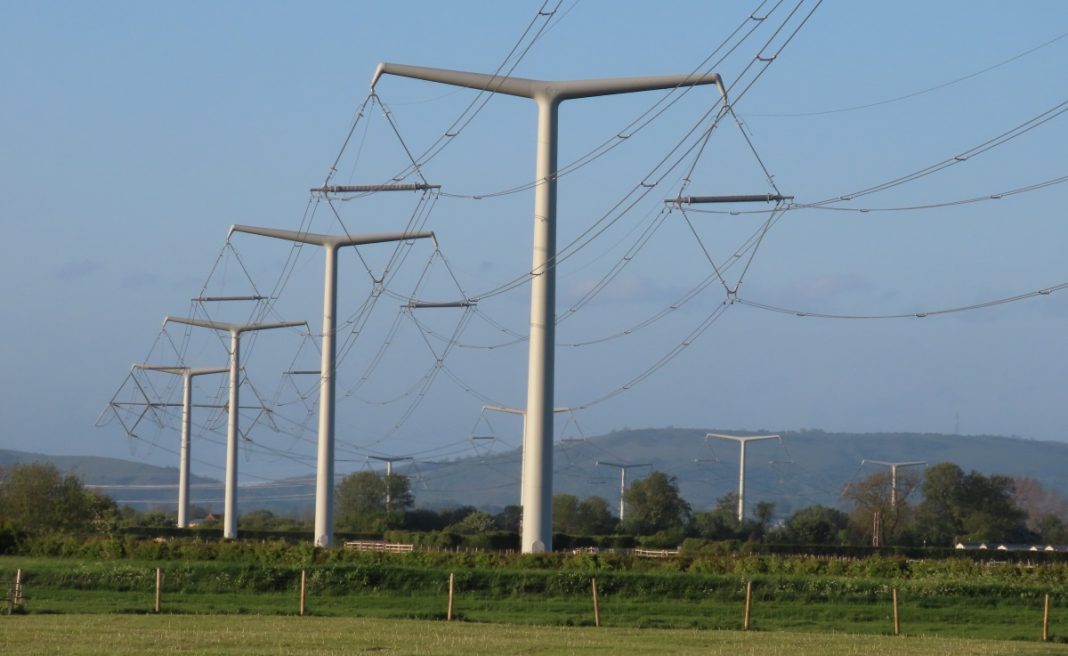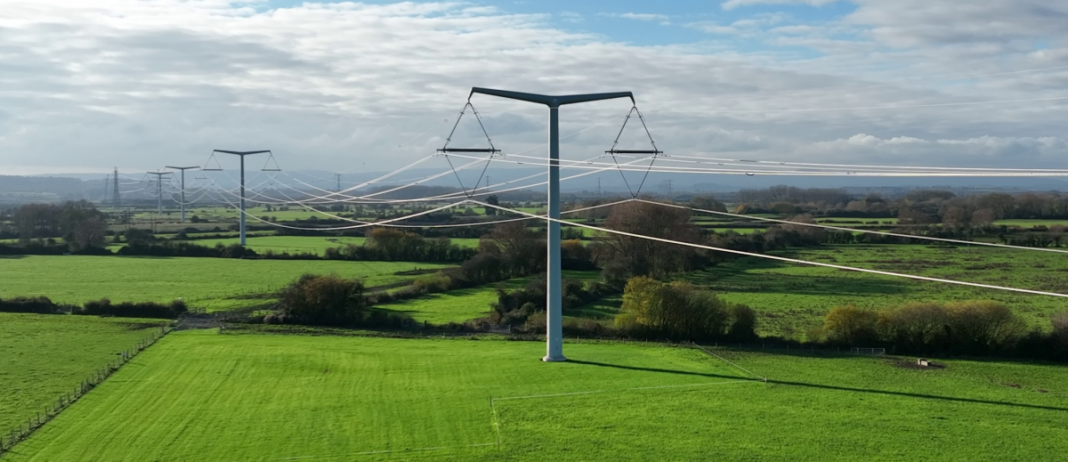National Grid’s Hinkley Connection Project has reached a major milestone with the completion of all 116 of its T-pylons.
The huge T-shaped structures will connect six million homes and businesses to low carbon energy as part of the Hinkley Point C project.
The last of the pylons’ 232 diamond-shaped insulators was recently lifted by crane into place on a T-pylon between Yatton and Kenn by National Grid and principal contractor Balfour Beatty.
The first T-pylon was constructed in 2021 near East Huntspill.

At 35m high, they are a third shorter than National Grid’s traditional lattice transmission pylons and take up less room on the land.
47 more T-pylons were completed by the end of 2022.
In early 2023, 36 new pylons were installed between Woolavington and Loxton.
Cables running under the Mendip Hills Area of Outstanding Natural Beauty and the newly built substation at Sandford means that these are already being supplied by high voltage electricity.

In the meantime, work then started on the final 68 pylons running north of Sandford to Portbury — and these have now been completed.
It is hoped that all the pylons will be energised by the end of 2024 and the last of the old lattice-style pylons will be removed.
Roxane Fisher-Redel, senior project manager for National Grid on the Hinkley Connection Project, says: “National Grid’s T-pylons are the first new design for overhead electricity lines in over a century and will play a central role in connecting low carbon energy to millions of people when Hinkley Point C begins generation.
“Erecting all the 116 T-pylon structures is a huge milestone and now we look ahead to 2025 and full completion of this project, which will play such a key role in transmitting cleaner, homegrown energy around the UK – enough to power six million homes and businesses.”
It is hoped that the £900 million project will help the UK meet its net zero target by 2050.
This will mean that we use more sustainable energy sources and reduce our carbon emissions, with any carbon that is released into the atmosphere being reabsorbed by our oceans and forests.







